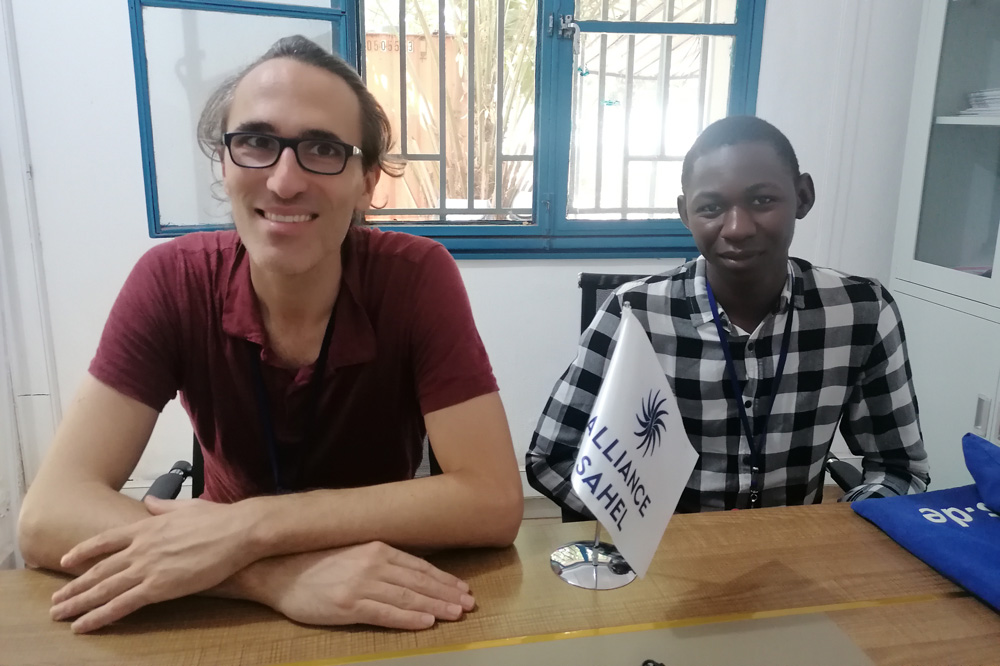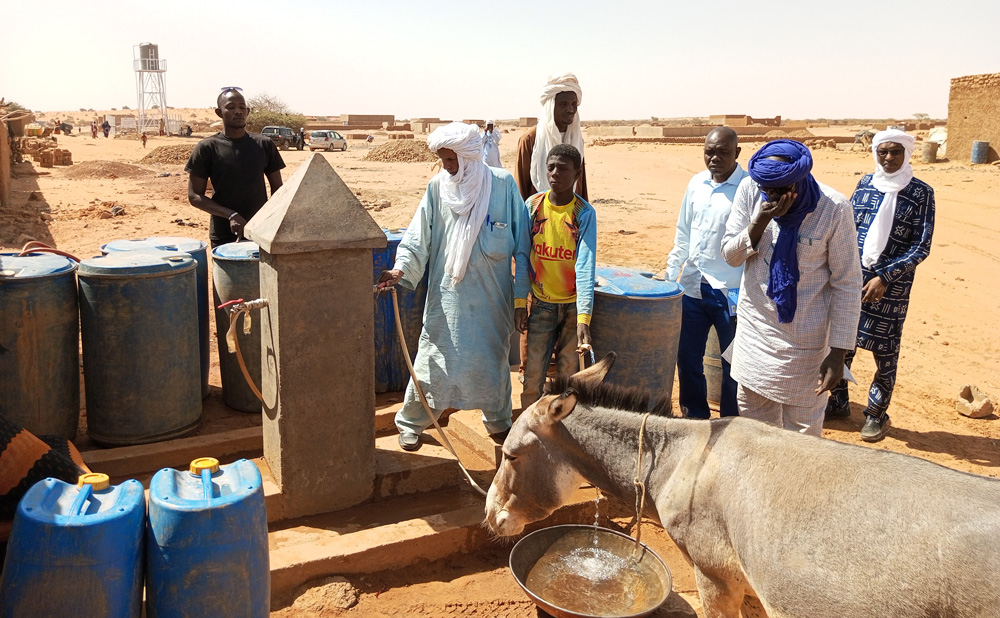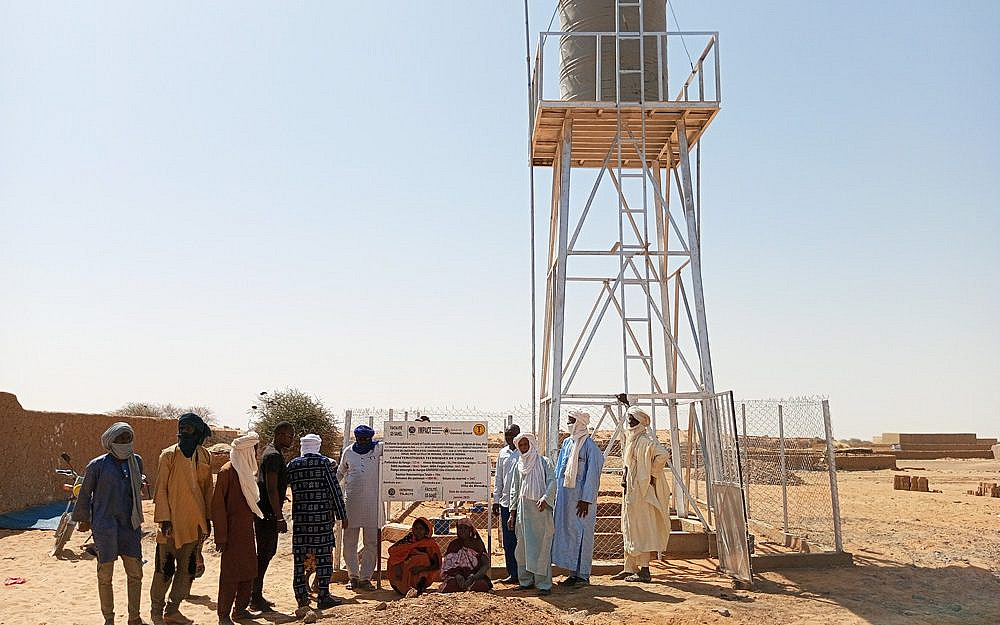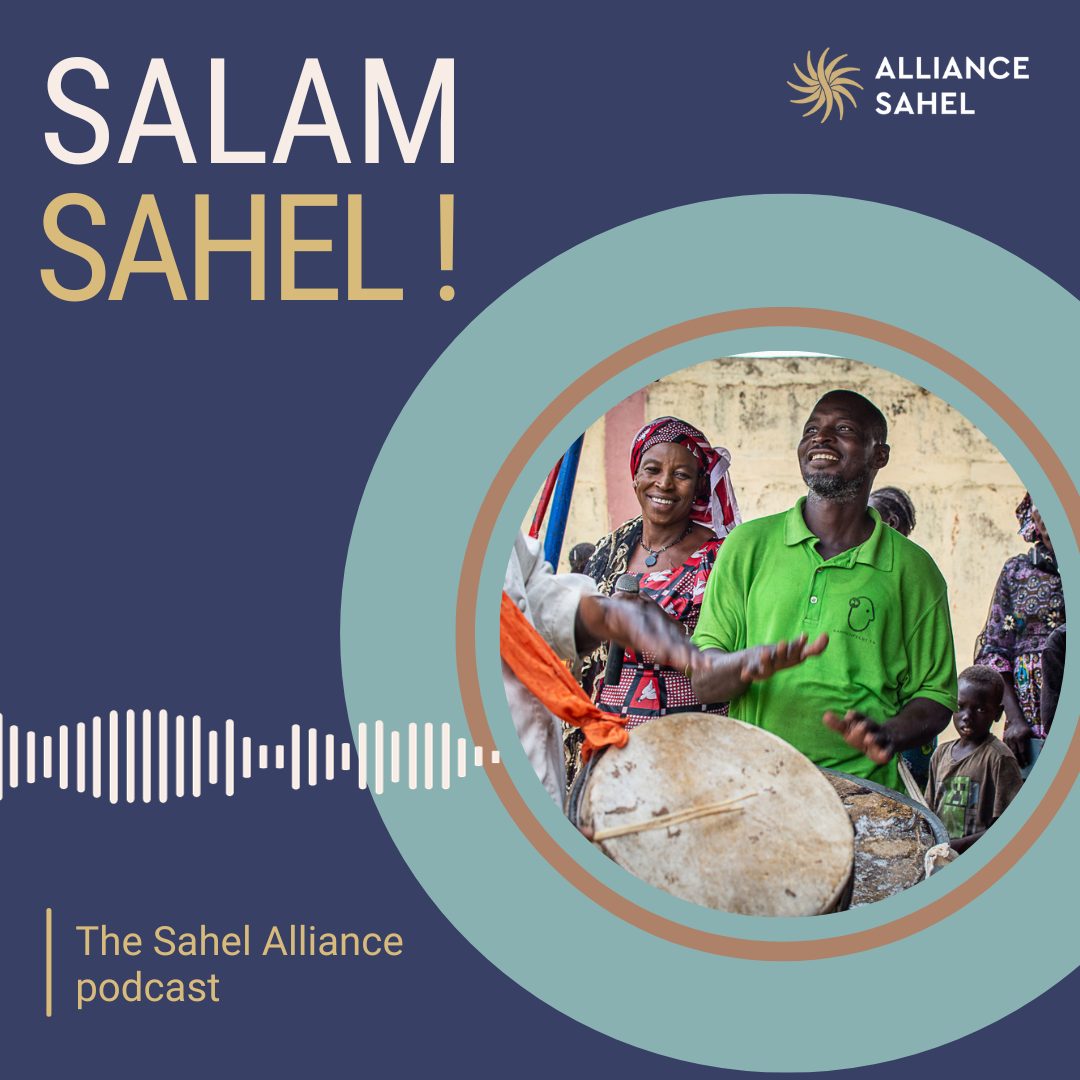Investing in Public Infrastructure in Mali
Working closely with the beneficiaries and local authorities, the “Construisons pour la Paix – Building for Peace” project is helping to revitalise the socio-economic environment in northern Mali. This project, funded by the Sahel Facility Foundation, adopts a geographically focused and flexible “zonal” approach, to suit the changing context.
Interview with:
- Boulaye Dembele (BD), ACTED Project Development Officer and focal point for the “Building for Peace” project
- Avedis Babarian (AB), ACTED member and coordinator of the “Building for Peace” project consortium

Which issues are you trying to address with this project? How were the needs identified?
AB: The “Building for Peace” project aims to revitalise the socio-economic space in northern Mali by engaging communities in the building and rehabilitating process for public infrastructure: health centres, schools, sanitary and hygiene facilities, etc.
The most important needs are related to water. This is one of the most critical issues in the region.
Initially planned for selected circles in the Gao/Ansongo region, we have extended the implementation area due to the complex security situation in northern Mali. This decision, reached in agreement with the implementing partners and the Sahel Facility Foundation, minimises the impact of any interruption in access to intervention sites.
The project now covers all the regions initially targeted, and is also being implemented in Menaka and Koro in the centre of the country.
The needs in the intervention areas were prioritised by Search For Common Ground (SFCG) and Tassaght through contact with the communities. Community leaders have set up dialogues and workshops to identify community needs, based on the Social and Economic Development Plans (PDSEC).
What are the challenges faced in the target regions? Is it possible to work in “fragile” areas?
AB: There are many challenges, but safety is the main one for both beneficiaries and implementing partners. There are regular attacks, robberies, hold-ups and incidents. A recent security report indicated that there had been 280 incidents in the north of the country since January 2023, in some of which aid workers were deliberately targeted.
Additionally, there is a high risk of humanitarian activities losing access to the areas of intervention. Extremist movements are active in the north. We can lose access to areas and infrastructure overnight. This has already happened, for example, in the municipality of Talataye in Gao, where it was planned to rehabilitate latrines. This area is no longer accessible. It was decided with the Sahel Facility Foundation to redirect the funds to other areas.
Another consequence of the region’s instability is the willingness and ability of companies to work in these high-risk areas.

What are you doing to overcome these challenges and provide people with the best possible support?
BD: The major challenge in implementing this project is security. To counter this, the security status is regularly monitored. The construction of infrastructure remains vital for these populations already affected by the considerable deterioration in their living conditions.
AB: To overcome the challenges, we are adopting a geographically flexible approach, in consultation with the Sahel Facility. For example, extending the areas of intervention to Menaka and Koro means that we can continue to implement the project and redirect funds to build infrastructure, even if access to an area is no longer guaranteed.
Contracts with service providers state that work will be carried out if the areas are accessible to all partners for the duration of the work, because there are situations where local service providers have access to areas that are inaccessible to international NGOs.
We rely heavily on our partners who are in direct contact with local populations. It was recently decided to refocus our activities in urban centres, where rural populations are migrating to flee jihadist attacks. The situation is not improving. I think that jihadist groups are going to become more widespread, in particular the ISGS (Islamic State in the Greater Sahara), which is likely to drive people out of rural communities and into already overcrowded urban areas.
Which aspects of the approach proposed by the Sahel Facility Foundation do you consider to be valuable? Does it reflect the realities on the ground?
AB: The Foundation has a zonal approach, with the aim of improving the socio-economic situation in a given geographical area. The call for activities to be redirected to other areas has somewhat undermined this philosophy. And it wasn’t easy, because the reorientation process took quite a long time to implement, but we are nevertheless pleased with this collaboration with a funding body that allows this flexibility in the selection of areas. We will respect this holistic approach by developing WASH (water, sanitation and hygiene) infrastructure, education centres, health centres, etc. in each approved area.
Coordination is going well, with a monthly meeting to review progress. Monitoring is carried out through quarterly reports.
However, it should be noted that there are different time scales between the programmatic level (short, in terms of weeks and months) and implementation on the ground, which takes longer. This is an issue that programme and donor teams are generally faced with.
How are local people and authorities involved in the project?
BD: The project is intended to be inclusive, with 25 community dialogue sessions organised by the SFCG and Tassaght organisations at the start of the project to select the infrastructure to be built. Communities have been involved from the needs identification phase, with representation from all social strata: women, young people, internally displaced people, etc. We ensure that women are represented at all levels, in local recruitment, on management committees and in the workforce, wherever possible.
Religious leaders, local authorities, traditional leaders, etc., are all involved in implementing the project. For example, municipal authorities take part in workshops to approve the intervention zones. We work with local leaders and neighbourhood chiefs to define the criteria for selecting beneficiaries for the Cash for Work scheme, for which recruitment is carried out at the local level.
The provisional acceptance of infrastructure requires the participation of decentralised technical services. The SFCG partner relies on ambassadors chosen from the community to carry out specific activities. Protocols and agreements are signed with the local authorities where operations take place for the management and monitoring of selected infrastructure projects.

What role does coordination with other NGOs play in the project? Is there effective coordination at the ground level?
AB: It was through discussions with our WASH cluster partners that we identified the Menaka area as a site for the construction of two solar-powered drinking water supply systems.
Because of the proximity of the location and type of project, we are in contact with the NGO Welthungerhilfe (WHH), which is developing a KFW-funded infrastructure project in the same area, to see how we can create a link between the two projects.
We also work with the “Abri” (Shelter) cluster to share experiences. In addition, these stakeholders could provide us with information on the needs of displaced people that could be addressed by our project.
In Gao, Bourem and Ansongo, there are very few infrastructure stakeholders. It’s a challenge that reinforces the relevance of the project.
What initial results have been achieved to date?
AB: Five infrastructure projects have been completed:
- 2 solar-powered drinking water supply stations in Menaka
- 1 livestock vaccination centre in Tilemsi
- 1 latrine block in Tilemsi
- 1 well in the municipality of Inekar
- The Tinaoker borehole has been rehabilitated.
My satisfaction comes from seeing infrastructure being built and used by the people who benefit from it. Between preparing specifications, launching invitations to tender, receiving proposals, drawing up contracts… I can say that the wait and the difficulties are proportional to the satisfaction.
BD: In terms of results, we should also add:
- The 25 community dialogue sessions
- the Conflict scan carried out to study the dynamics of conflicts and the security situation in the intervention zone
- A brainstorming workshop
- Training sessions for infrastructure management committees
- Training for Cash for Work beneficiaries – HIMO (High Intensity Labour)
It’s gratifying to see the provisional acceptance reports for an infrastructure project. The dynamism and synergy of the 3 partners involved in implementing the project are also to be praised.
Project information
The “Building for Peace” project is being implemented by a consortium of partners including 3 international NGOs, ACTED (lead partner), ACTED Impact, Search For Common Ground and the local NGO, Tassaght.
Objective: To contribute to peace-building, conflict prevention and development through catalytic community investment.
Planning: 2021-2025
Total budget: €5 million
Go further

